On one side of the metal-walled room, the quasi-optic laser was housed inside its plastic casing. Laura stood at the terminal, her fingers shaking so much she could barely type in the coordinates.
She had thought this out a thousand times, agonising over every detail, every possibility, and she knew that in order to give herself the surest chance of success she had to go back thirty-two years. This was almost certainly farther back than anyone had ever gone before. Laura’s father had lived at Ashcroft House until he was nineteen years old, when Laura’s grandfather had finally been forced to sell the house to property developers. That had been thirty-two years ago. If she focused the T-ray imager on the site where Ashcroft House had once stood and projected herself back thirty-two years, there would be at least three of her direct ancestors living in the house: her father, her grandfather, and her grandmother.
She knew that when going this far back, the imager could not pinpoint an exact day, but it could almost certainly take her back to a precise year. If she had to, she could make several attempts, until she was inside the house at night. Then all she would have to do was approach a sleeping person and take a drop of their blood. She had rehearsed this on herself countless times, and she knew she could do it so gently that a soundly sleeping person would never wake up. Laura would be nothing more than a shadow, completely invisible in the dark.
Laura finally picked up the tiny syringe she had brought with her, still sealed inside its plastic wrapping. She put it into a pouch in the suit, then she checked, and rechecked, the map coordinates. Finally she entered the destination year.
2026.
Laura stepped into the middle of the room, the helmet gripped in her hands. Her heart was racing. As she stood trembling, the walls seemed to shiver. A wave of weakness swept over her.
No. Please no.
She clenched her fists, and the feeling passed. It was just excitement. She had boosted herself less than twelve hours ago; she should be fine for hours yet. She looked down at the helmet, hesitating once more as she glimpsed her own face, a pale, trembling reflection in the plastic visor.
There had been over one thousand time experiments. Nothing had ever gone wrong. If there was the slightest problem, she would immediately abort.
Laura put on the helmet.
“Activate,” she said into the tiny microphone by her mouth.
Even from inside the helmet, she could hear the hum of the quasi-optic laser as it fed its rays along the pathways leading up to the top of the building, creating an invisible wave that shot into space, bounced off a satellite, and sped back downwards to a spot more than three hundred kilometers away, in Cornwall. The four walls of the chamber began to flash, her surroundings disappearing, then reforming into a new three-dimensional image. She saw the banisters of a staircase, leading along a long hallway. A carpeted floor marked with bright patches of sunlight.
It was daytime!
“Abort,” she said instantly, her heart pounding.
The metal walls of the chamber reappeared. Laura waited several seconds.
“Activate,” she said again. The chamber melted away, replaced by the same surroundings as before, only now the banisters were drenched in shadow, moonlight glinting brightly off the polished wood.
It was night.
Laura looked breathlessly around her, the visibility device contained in the visor of her helmet helping her to see in the darkness. She saw the long hallway stretching out on both sides of her, the outlines of closed doors etched in the wall opposite the banisters. Slowly, she reached out a trembling gloved hand and pressed it against the wall.
It was solid! She could feel it! Oh god, god, she was actually here!
She was upstairs, where the bedrooms were. Exactly where she wanted to be.
She saw no movement on the landing, or downstairs below the banisters. It was clearly late at night. Everybody must be asleep. She turned around, studying the closed doorways. Her father might actually be here. He might be lying asleep in one of these very rooms. Could she see him? Just for a moment, could she watch the sleeping face of the father she had never known? Could she touch him?
Laura began to walk along the landing, passing each of the closed doors. In one sense of reality, she was still standing in the middle of the quasi-optic chamber, her feet moving over the conveyer panel, the T-ray imager automatically adjusting the three-dimensional image around her as she moved. The illusion worked, as long as she walked slowly and made no sudden movements. She reached the end of the banister. Here the landing opened outwards into a square, with walls on all four sides. In the wall before her, there was a large window with the curtains drawn back. Moonlight shone through the glass. A long patch of sheer white light created a shining slit on the carpet, glinting off the wood of another doorway behind her.
Laura turned slowly around. So far she had only walked in a straight line. Now she moved sideways, remembering how to accomplish the movement from the time trips she had taken years ago. As she moved, a peculiar thing happened. The image of the doorway in front of her expanded, then divided itself in two. Laura stared. There were now two identical doorways, next to each other. There was something wrong with the time image.
No.
Laura trembled. Jesus Christ, no! The imager never went wrong! It had never happened, not in over one thousand experiments! Tears stung Laura’s eyes as she blinked. The image around her seemed perfectly solid, except for the one anomaly. Two identical doors.
Then Laura looked again, and her breath caught in her throat.
They were not identical. Not quite. The door on the right was closed, but the door on the left was partially open. Laura’s heart beat furiously. She knew the door had not been open before.
Abort. I have to abort this now!
She stepped forward. The image of the open door remained solid. She stepped forward again. Now she could see through into the room. The curtains in here were also open. A double bed was against the wall on Laura’s right. A figure lay asleep in the bed. Because of the moonlight, and the visibility aid in her helmet, Laura could see the figure’s face very clearly. A youngish to middle-aged man with a thick moustache. Laura had spent countless hours studying the photographs of her ancestors, and she knew the man in the bed was not her father, or her grandfather. It was Captain Rideon Ashcroft, who had fought in the First World War.
Laura stood for at least a minute, her blood turning cold as she watched the peacefully sleeping man. It was supposed to be two thousand and twenty-six, but this man had died in nineteen thirty-six. With a gasp of fear, Laura stepped back into the hallway.
How could this be?
Now she saw other anomalies around her. Another doorway had divided in two, one version partly superimposed upon the other. There were now two images of the stair banisters, standing a meter or so apart. Laura moved again, and a section of the dark landing was suddenly flooded by sunlight. She saw a woman walking along with two little blond-haired children holding each of her hands. The woman was fairly young and wore a long dress in the fashion of the early twenty-first century. Laura gasped as she realised the woman was Madeleine Ashcroft, her great-aunt.
No.
The entire landing suddenly split into two, then divided again into four, then into six. The time echo was disintegrating, fragmenting into a kaleidoscope of different moments in time, all superimposed over each other. Laura screamed. In one echo, she saw a door opening and a portly, red-faced man stepping out onto the landing. She recognised Roger Ashcroft, the man who had taken control of the family business in the nineteen fifties. In an image below her, she saw two thin young men, one of whom was Michael Ashcroft, whose son had nearly been killed in a car accident in nineteen eighty-five.
Читать дальше

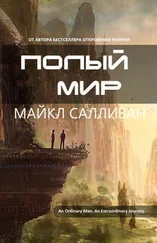
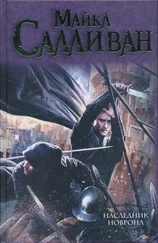
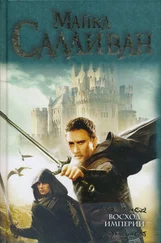
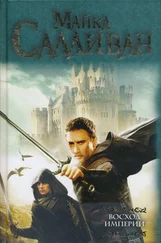

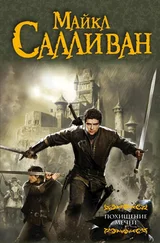

![Майкл Салливан - Эра войны. Эра легенд [3-я и 4-я книги серии] [сборник litres]](/books/388627/majkl-sallivan-era-vojny-era-legend-3-ya-i-4-thumb.webp)

![Майкл Салливан - Смерть леди Далгат. Исчезновение дочери Уинтера [сборник]](/books/399107/majkl-sallivan-smert-ledi-dalgat-ischeznovenie-do-thumb.webp)

